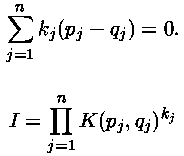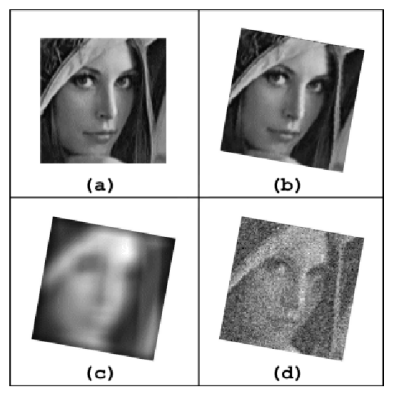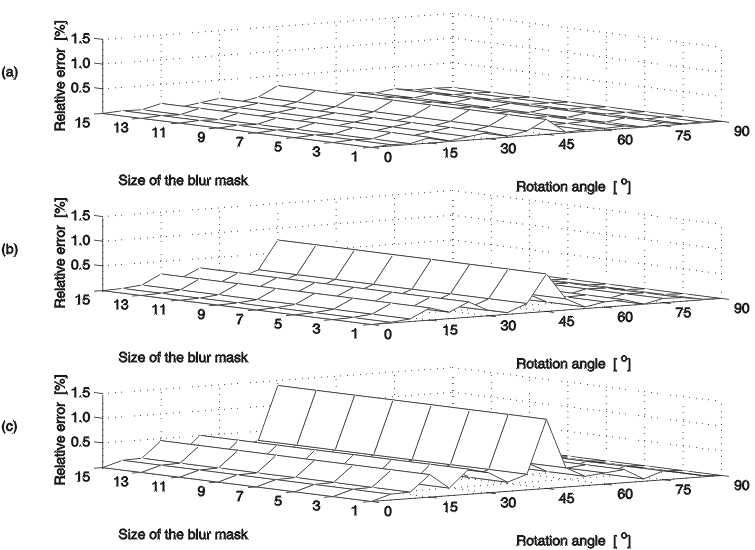
A new class of moment-based features
invariant to image rotation, translation, scaling, contrast changes and
also to convolution with an unknown PSF are introduced. These features
can be used for recognition of objects captured by a
non-ideal imaging system of unknown
position and blurring parameters.
Most real cameras and other
sensors can be modelled as a linear space-invariant system, where the relationship
between the input f(x,y) and the acquired image g(x,y) is described as
g(T(x,y)) = a(f * h)(x,y) + n(x,y)
In the above model, h(x,y) is the point-spread function (PSF) of the system, n(x,y) is an additive random noise, a is a constant describing the overall change of contrast, T stands for a transform of spatial coordinates due to projective imaging geometry and * denotes 2-D convolution.
We developed invariants to convolution
based on complex moments of the image function f

The invariants to convolution with
any
centrosymmetric h(x,y) have form of (if (p+q)
is odd)

where f(x,y) is an image function. K is from Z to C. If (p+q) is even then K(p,q)=0. . The number r=p+q is called the order of the invariant.
The additional convolution to the simillarity transform can be derived.
For the rotation:
If n >= 1 and let k_j, p_j and q_j; j=1, ..., n, be non-negative integers such that (p_j+q_j) is odd for each j and that

is invariant to rotation
around the origin and to convolution with a centrosymmetric PSF.
We have accomplished several experiments to verify the invariance to both convolution and rotation of the combined invariants and also to evaluate their robustness to additive random noise.
In the first experiment we took a part of Lena image sized 101x101 pixels with zero border 30 pixels wide. From this image other 19 images were generated by the rotating by various angles from 0 to 90 degrees. Normalized uniform square masks of different sizes (3x3, 5x5, 7x7, 9x9, 11x11, 13x13 and 15x15) were employed as the blurring filters and every image was convolved with all of them.

Nine basic combined invariants (Phi(2,1), Phi(3,0), Phi(5,0), Phi(4,1), Phi(3,2), Phi(7,0), Phi(6,1), Phi(5,2) and Phi(4,3), where p_0 = 2 and q_0 = 1) as well as their relative errors were computed on all 152 test images. Figure shows how the relative errors of the invariants depend on the image blur and rotation. The influence of the image blur is negligible as can be expected from theoretical considerations. The effect of rotation is much more significant which, however, is mainly due to resampling during the rotation. It can be also seen that the higher the order of the combined invariant the more vulnerable the invariant. In all cases under investigation, the relative errors of the invariants were less than 1.5 %, that illustrates perfect stability.

The relative errors of the invariants for blurred and rotated images. The angle of the image rotation is from 0 to 90 degrees, the size of the blurring filters is from 1x1 (no blur) to 15x15.(a) - Phi(2,1), (b) - Phi(4,1), (c) - Phi(7,0)
Relevant publications:
